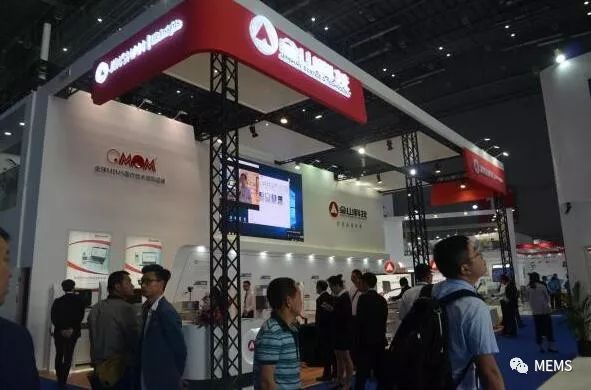Capsule robot developed by intelligent medical and MEMS technology artificial intelligence technology
When medical products are more and more like "smart" and "precise" evolution, the combination of Micro ElectroMechanical Systems (MEMS) technology and medical biology will become an inevitable trend. MEMS technology is a tiny system that combines mechanical and electronic components to sense external forces, heat, light, raw, magnetic, and chemical information. It is used in the fields of physics, mechanics, bioengineering, medical, optics, materials engineering, and electronic engineering. Due to the different needs of different product devices, the product market is extremely fragmented. But with advances in in vitro diagnostics, drug research, patient monitoring, drug delivery, and implantable medical devices, medical devices require innovative technologies to rapidly improve performance, reduce costs, and reduce size.
The advantages of MEMS technology in sensing and execution capabilities have led to widespread adoption in the healthcare industry. In the medical field, unlike traditional electronics, MEMS are small, energy-intensive, and powerful. The chip has a minimum diameter of 1-2 mm, which solves the problem that ordinary medical equipment cannot enter small parts such as blood vessels, fallopian tubes, and breasts; the small size and low energy consumption can also maintain the working time of the device; The ability to centralize the acquisition, processing, and execution of multiple functions can play multiple roles in the application process. When MEMS technology is combined with endoscopy equipment, it can produce capsule endoscopes that can be swallowed naturally. The inspection process is painless, non-invasive and non-anesthetic. It can be used in one-time use to avoid cross infection. When combined with camera suction tube, it can produce palace. Cavity observation attracts the surgical system, accurately locates the gestational sac, the true aponeurosis, and directional clearance, reducing the number of suctions on the uterine wall, and avoiding high-risk abortion for surgery. Therefore, industry observers predict that sales of MEMS medical devices will grow rapidly in the next five years, with an average annual growth rate of approximately 21%.

At this year's CMEF Medical Expo, Chongqing Jinshan Technology (Group) Co., Ltd. ("Jinshan Technology") demonstrated the most advanced medical products with domestic MEMS technology, including "Huitu" magnetic control capsule gastroscope system, "wide-angle" capsule type Endoscope system, esophageal impedance-pH combined monitoring system, intrauterine observation and attraction surgery system, argon high-frequency electric knife JSDD-Q, etc. It is understood that Jinshan Technology's capsule gastroscope is the world's first self-developed product of the same type, with complete independent intellectual property rights, capsule colonoscopy is the world's second independent research and development products. In 2007, the product entered the United Nations procurement catalogue and entered the international market through European CE certification, Canada and Russia registration; in 2008, it was first listed in the medical insurance catalogue in Chongqing, and subsequently entered the national medical insurance. Up to now, the capsule endoscope has been listed in 86 countries in Europe, America and the Middle East. The market share of similar foreign products has reached 50%; the domestic market share has exceeded 95%, covering all hospitals at the county level and above in the country. This data also broke the current situation that domestic high-quality medical technology has always been monopolized by foreign companies. Dr. Wang Jinshan, chairman of Jinshan Technology, said in an interview with Sina Pharmaceutical that only one capsule endoscope has applied for more than 1,000 invention patents. And the number of patents is still increasing year by year. The company's annual investment in research and development accounts for 12% of total sales, and invention patents can reach more than 200 each year. The domestic capsule endoscope market needs more competitive products with independent innovation. Only competition can promote the development of technology and market.
"2018-2023 China's smart medical industry development prospects and investment strategic planning analysis report" shows that artificial intelligence technology is currently used in medical fields mainly in medical robots, intelligent health management, intelligent image recognition, intelligent diagnosis and treatment, and intelligent drug development. field. Dr. Wang Jinshan believes that in the future, artificial intelligence technology will be combined with MEMS technology, optical technology and robot technology to form an overall system that will upgrade medical functions more accurately and comprehensively. At present, Jinshan Technology has developed a key artificial intelligence product, the capsule robot, which can realize the automatic attitude control of the capsule endoscope through the machine. When the digestive tract is detected by taking pictures, the attitude control system is used in the digestive tract. Autonomous exercise is realized, and AI+ medical imaging technology is used to rapidly screen suspicious lesion images, and multi-angle observation of suspicious lesions provides a richer and more solid clinical basis for the diagnosis, analysis and treatment of digestive tract diseases. In addition, its self-developed large chest and abdominal surgery robot is also preparing for market. On April 11, Jinshan Technology and the Institute of Automation of the Chinese Academy of Sciences reached a cooperation to build a MEMS National Engineering Center Artificial Intelligence Technology Research Center to jointly build an internationally advanced intelligent medical big data engineering laboratory to promote artificial intelligence technology in medical imaging. More widely used in areas such as medical robots. In addition to "equipment" MEMS technology products, Kingsoft has dozens of research and development projects in medical imaging and big data, graphene medical applications, medical robots, and health care Internet services. As the medical industry integrates more high-tech such as artificial intelligence and sensor technology, medical services are moving towards true intelligence and promoting medical quality.
The castings produced by the Silica Sol Casting process have high dimensional accuracy and can reach the CT4-8 level specified in GB/6414-1986. The surface roughness value is low, which can reach RA0.8-6.3μm. No machining; the silica sol casting process also produces castings with more complex geometries
Investment Casting,Lost Wax Casting,Steel Investment Casting,Stainless Steel Investment Casting
Tianhui Machine Co.,Ltd , https://www.thcastings.com